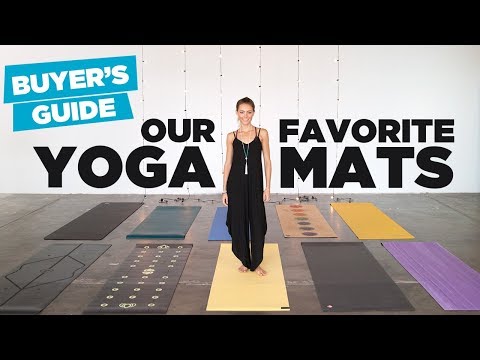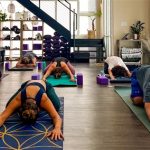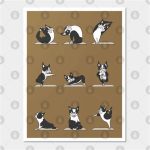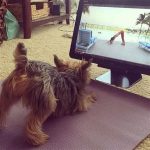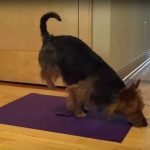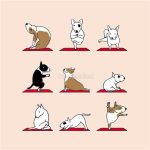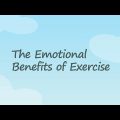Essential Yoga Equipment: Comprehensive Reviews and Buyer’s Guide
Introduction
Yoga has become an integral part of many people’s wellness routines, offering physical, mental, and spiritual benefits. With the growing popularity of yoga, the market is flooded with various equipment and accessories designed to enhance the practice. This comprehensive guide reviews essential yoga equipment, providing insights from different perspectives to help you make informed decisions.
Key Concepts
- Yoga Mat: The foundation of your practice, providing comfort and stability.
- Yoga Blocks: Assist in achieving correct posture and extending reach.
- Yoga Straps: Enhance flexibility by allowing deeper stretches.
- Yoga Bolsters: Provide support in restorative poses and deep relaxation.
- Yoga Wheels: Aid in improving flexibility and balance, and deepen stretches.
- Yoga Towels: Absorb sweat and prevent slipping during intense practices.
- Yoga Bags: Convenient for carrying and storing yoga equipment.
Historical Context
Yoga originated in ancient India, dating back over 5,000 years. Initially practiced as a spiritual and ascetic discipline, it has evolved into various forms and styles. The introduction of yoga to the Western world in the late 19th and early 20th centuries sparked the development of yoga equipment to meet the needs of practitioners. The 1960s and 1970s saw a surge in yoga’s popularity in the West, leading to the commercialization of yoga accessories. Today’s market offers a wide range of products, reflecting the diverse styles and preferences of modern yogis.
Current State Analysis
The yoga equipment market is robust and continuously expanding. Innovations in materials and design cater to different types of yoga practices, such as Hatha, Vinyasa, Ashtanga, and Bikram. The market is segmented into budget-friendly options, premium products, and eco-friendly choices. Popular brands include Manduka, Liforme, Gaiam, and Jade Yoga, each offering unique features and benefits.
Yoga Mat Reviews
| Brand | Material | Thickness | Key Features | Price Range |
|---|---|---|---|---|
| Manduka PRO | PVC | 6mm | Durable, non-toxic, lifetime guarantee | $100-$130 |
| Liforme Yoga Mat | Eco-polyurethane | 4.2mm | Alignment lines, grip, eco-friendly | $140-$160 |
| Gaiam Print Mat | PVC | 5mm | Lightweight, affordable, various designs | $20-$30 |
| Jade Yoga Harmony | Natural rubber | 5mm | Eco-friendly, excellent grip | $70-$90 |
Yoga Block Reviews
| Brand | Material | Dimensions | Key Features | Price Range |
|---|---|---|---|---|
| Manduka Cork Block | Cork | 9” x 6” x 4” | Durable, eco-friendly, firm | $20-$25 |
| Gaiam Yoga Block | Foam | 9” x 6” x 4” | Lightweight, soft, affordable | $10-$15 |
| Lululemon Lift Block | Foam | 9” x 6” x 4” | High-density, durable, comfortable grip | $18-$22 |
Yoga Strap Reviews
| Brand | Material | Length | Key Features | Price Range |
|---|---|---|---|---|
| Manduka Align Strap | Cotton | 8ft | Durable, eco-friendly, secure buckle | $16-$20 |
| Yoga Design Lab Strap | Polyester | 8ft | Stylish designs, lightweight | $15-$18 |
| Hugger Mugger D-Ring Strap | Cotton | 6ft | Strong, durable, easy to adjust | $12-$15 |
Yoga Bolster Reviews
| Brand | Material | Dimensions | Key Features | Price Range |
|---|---|---|---|---|
| Manduka Enlight Bolster | Polyester | 28” x 10” x 5” | Lightweight, soft, removable cover | $68-$80 |
| Hugger Mugger Standard Bolster | Cotton | 25” x 12” x 6” | Firm, durable, machine washable cover | $80-$90 |
| YogaAccessories Supportive Bolster | Cotton | 24” x 6” x 12” | Affordable, supportive, various colors | $40-$50 |
Practical Applications
Choosing the right yoga equipment can significantly impact your practice. High-quality mats provide better grip and cushioning, essential for maintaining balance and reducing strain on joints. Blocks and straps can help achieve proper alignment and deepen stretches, making poses more accessible and preventing injuries. Bolsters and wheels support restorative and advanced poses, enhancing comfort and flexibility. Towels and bags offer convenience and hygiene, ensuring a smooth and enjoyable practice.
Case Studies
Case Study 1: Yoga for Beginners
Equipment: Gaiam Print Mat, Gaiam Yoga Block, Manduka Align Strap
Findings: Beginners found the affordable Gaiam mat comfortable and non-slip. The Gaiam block and Manduka strap helped them achieve proper alignment and improve flexibility. This combination made yoga accessible and enjoyable, reducing the risk of injury.
Case Study 2: Advanced Practitioners
Equipment: Manduka PRO Mat, Manduka Cork Block, Yoga Wheel
Findings: Advanced practitioners appreciated the durability and support of the Manduka PRO mat. The cork block provided stability in challenging poses, while the yoga wheel enhanced their practice by deepening stretches and improving balance.
Stakeholder Analysis
Various stakeholders influence the yoga equipment market, including manufacturers, retailers, yoga studios, instructors, and practitioners. Manufacturers focus on innovation and quality to meet the diverse needs of practitioners. Retailers offer a wide range of products, often providing educational resources to help customers make informed decisions. Yoga studios and instructors play a crucial role in recommending equipment to their students, emphasizing the importance of quality and suitability. Practitioners, as the end-users, drive demand and influence market trends through their preferences and feedback.
Implementation Guidelines
- Identify Your Needs: Consider your yoga style, level of experience, and specific requirements when selecting equipment.
<
